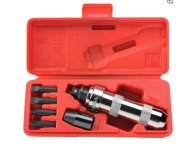buckz6319
Regular Contributor
I'm looking for some advice on how to remove the bubbleback exhaust cover from my 1987 Johnson 110?
I have tried every which way to remove this cover only, however I can't figure out how or if it can be removed without removing the power head? The belly keeps getting hung up at the bottom between the casing
I would appreciate any input on this.
thanks!
here are some pics
 IMG_20181001_181312 by , on Flickr
IMG_20181001_181312 by , on Flickr
 IMG_20181001_181240 by , on Flickr
IMG_20181001_181240 by , on Flickr
 IMG_20181001_181216 by , on Flickr
IMG_20181001_181216 by , on Flickr
 IMG_20181001_181706 by , on Flickr
IMG_20181001_181706 by , on Flickr
 IMG_20181001_181715 by , on Flickr
IMG_20181001_181715 by , on Flickr
I have tried every which way to remove this cover only, however I can't figure out how or if it can be removed without removing the power head? The belly keeps getting hung up at the bottom between the casing
I would appreciate any input on this.
thanks!
here are some pics
 IMG_20181001_181312 by , on Flickr
IMG_20181001_181312 by , on Flickr IMG_20181001_181240 by , on Flickr
IMG_20181001_181240 by , on Flickr IMG_20181001_181216 by , on Flickr
IMG_20181001_181216 by , on Flickr IMG_20181001_181706 by , on Flickr
IMG_20181001_181706 by , on Flickr IMG_20181001_181715 by , on Flickr
IMG_20181001_181715 by , on Flickr














